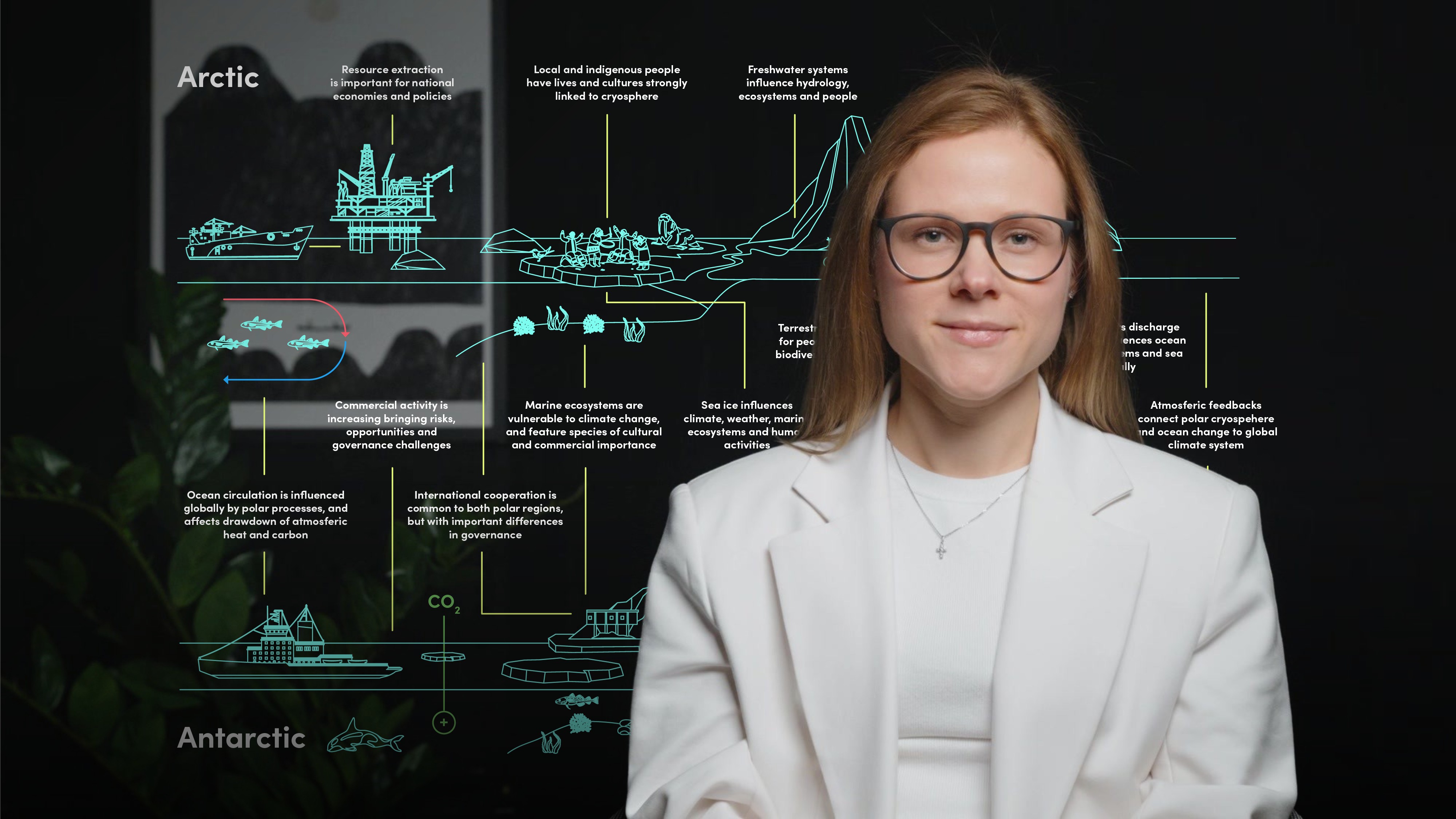
Polar Regions and the Tipping Points

Elena Doms
15 years: Climate Advisor and Advocate
The polar regions, covering Earth's North and South poles, are crucial in regulating global climate. They impact weather, provide food resources, reflect sunlight, maintain sea levels, and absorb carbon emissions. Melting ice sheets in the Arctic, Greenland, and Antarctica due to global warming threaten to disrupt the balance of climate tipping points, large ecosystems regulating Earth's climate system. As we approach a 1.5℃ warming threshold, we risk crossing a point of no return, leading to floods, heatwaves, droughts, rising sea levels, and mass migrations. It is essential to limit global warming to 1.5℃, recognising it as a physical limit rather than a political target.
The polar regions, covering Earth's North and South poles, are crucial in regulating global climate. They impact weather, provide food resources, reflect sunlight, maintain sea levels, and absorb carbon emissions. Melting ice sheets in the Arctic, Greenland, and Antarctica due to global warming threaten to disrupt the balance of climate tipping points, large ecosystems regulating Earth's climate system. As we approach a 1.5℃ warming threshold, we risk crossing a point of no return, leading to floods, heatwaves, droughts, rising sea levels, and mass migrations. It is essential to limit global warming to 1.5℃, recognising it as a physical limit rather than a political target.

Polar Regions and the Tipping Points
13 mins 21 secs
Key learning objectives:
Understand that the polar regions are interconnected and impact the entire planet’s climate, weather and ecosystems
Understand the amount of sea ice that has already been lost
Outline the global tipping points and how they are interconnected
Overview:
The polar regions, covering Earth's North and South poles, are crucial in regulating global climate. They impact weather, provide food resources, reflect sunlight, maintain sea levels, and absorb carbon emissions. Melting ice sheets in the Arctic, Greenland, and Antarctica due to global warming threaten to disrupt the balance of climate tipping points, large ecosystems regulating Earth's climate system. As we approach a 1.5℃ warming threshold, we risk crossing a point of no return, leading to floods, heatwaves, droughts, rising sea levels, and mass migrations. It is essential to limit global warming to 1.5℃, recognising it as a physical limit rather than a political target.
How are the polar regions interconnected and how do they impact climate, weather and ecosystems?
The polar regions cover vast areas of frozen ground, glaciers, and ocean, regulating our climate and weather, and supporting a diverse range of ecosystems. They also impact the rest of the planet through climate tipping points, which when destabilised, can cause extreme weather events, rising seas, and affect billions of people worldwide.
Polar regions are crucial in regulating the Earth's weather by keeping the planet cool and reflecting sunshine off the ice. They also absorb carbon emissions through oceans and forests and store methane in permafrost.
However, melting ice sheets in the Arctic, Greenland, and Antarctic, due to global warming, are causing a loss of sea ice, rising sea levels, and destabilising climate patterns, impacting all of us.
How much sea ice has already been lost?
The Arctic has already lost 1/3 of its entire winter sea ice and 3/4 of its summer sea ice in just 20 years. Even with very low emissions, scientists believe ice-free Arctic summers are now inevitable, with Arctic ice decreasing 12% per decade and shifting towards a state not seen in 3 million years.
What are the global tipping points?
Melting ice accelerates global warming, which then causes more ice to melt, increasing warming even more. Climate feedback loops like this are called tipping points, which are large biological ecosystems that regulate the entire climate system on Earth. Crossing them is like breaking a cup, and once their thresholds are crossed, they shift to undermine our survival.
Scientists monitor 16 tipping points, including Arctic sea ice, Greenland and Antarctic ice sheets, boreal forests, the Amazon rainforest, ocean currents, and coral reefs, which are showing signs of imbalance or at risk at 1.5℃ of warming, a threshold we are set to reach in the early 2030s.
Just two of the tipping points together, the collapse of the Greenland and West Antarctica ice sheets, represent a 10 metre rise in sea levels.
How are tipping points interconnected?
Tipping points are interconnected and trigger each other, like a house of cards. For instance, melting Arctic sea ice leads to the melting of the Greenland ice sheet, releasing cold fresh water into the ocean, which changes currents in the North Atlantic, slowing down the overturning of heat and pushing the monsoon system south, causing droughts and fires in the Amazon rainforest, and accelerating the melting of the West Antarctic ice sheet. Therefore, the Arctic and polar regions are crucial in keeping our whole planet stable, and limiting global warming to 1.5℃ is crucial to avoid further degradation of our life-support system.

Elena Doms
There are no available Videos from "Elena Doms"

